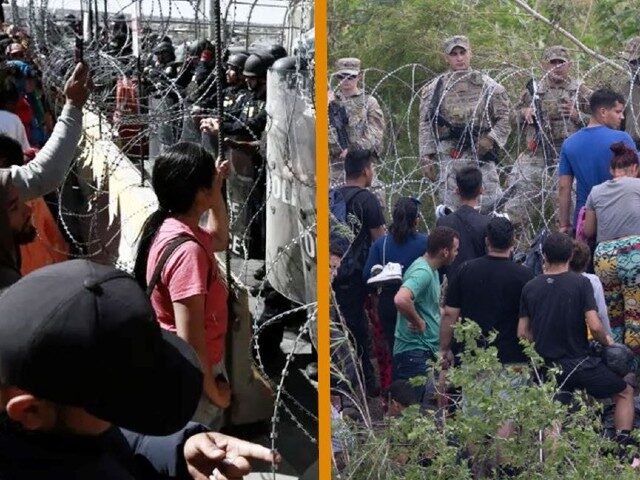U.S. Representative Joaquin Castro (D-TX) told CNN Newsroom’s Jim Acosta he believes Texas Governor Greg Abbott’s use of razor wire and a floating border buoy system is “barbaric and inhumane.” Castro did not comment on the Biden administration’s use of the same wire to repel asylum seekers at ports of entry along the southwest border. At the ports, the wire is deployed atop gates and along temporary barriers used to close the ports when migrants rush the port without an appointment.
On Sunday, Castro told Acosta he is leading a delegation of Democratic representatives to the border city of Eagle Pass on Tuesday in hopes of pressuring the governor to remove the barriers and razor wire deployed under Operation Lone Star to deter migration, Mediate reported.
Castro told Acosta:
Even though migration has dropped substantially since the end of Title 42 a few months ago, even though the number of border crossings has dropped, Greg Abbott has gotten more extreme in how he’s treating migrants and asylum seekers. So, he installed razor wire along the Rio Grande, even though he’s a governor without any jurisdiction over an international body of water.
In a tweet on August 2, Castro asserted “The Texas Governor is knowingly trying to injure, maim and kill migrants seeking asylum in the United States with razor wire and drowning devices.” In the tweet, Castro also alleged Abbott’s floating barrier caused the drowning of a migrant stating, “Texas Governor Greg Abbott’s @GovAbbott barrel traps have caused an asylum seeker to drown.”
As reported by Breitbart Texas, the body of a drowned migrant was discovered along the barrier on August 2 and according to the Texas Department of Public Safety Highway Patrol is believed to have drowned upstream of the area and floated down to the buoys.
Customs and Border Protection uses concrete barriers including concertina wire to repel migrants who attempt to present themselves at ports of entry without appointments. These migrant surges resulted in the closures of the ports on several occasions. In Eagle Pass, both international bridges were closed in July after migrants rushed the port of entry in an attempt to claim asylum. The migrants rushed past Mexican authorities and were ultimately repelled by CBP.
The migrants moved from the bridge to the Rio Grande and attempted to make landfall. The migrants were met by Texas law enforcement authorities and were believed to have returned to Mexico due to the deployment of steel shipping containers and concertina wire blocking their entry into Texas.
The posture of Texas law enforcement authorities along the Rio Grande may be responsible for moving some migrant crossings and cartel smugglers to alternate routes farther from the incorporated areas of Eagle Pass.
On Friday, a cartel smuggler armed with a rifle was detected guiding a group of migrants across the Rio Grande north of Eagle Pass. The smuggler was photographed by a Texas Department of Public Safety Highway Patrol Drone outside the downtown Eagle Pass area fortified by steel shipping containers and concertina wire.
Randy Clark is a 32-year veteran of the United States Border Patrol. Prior to his retirement, he served as the Division Chief for Law Enforcement Operations, directing operations for nine Border Patrol Stations within the Del Rio, Texas, Sector. Follow him on Twitter @RandyClarkBBTX.

COMMENTS
Please let us know if you're having issues with commenting.